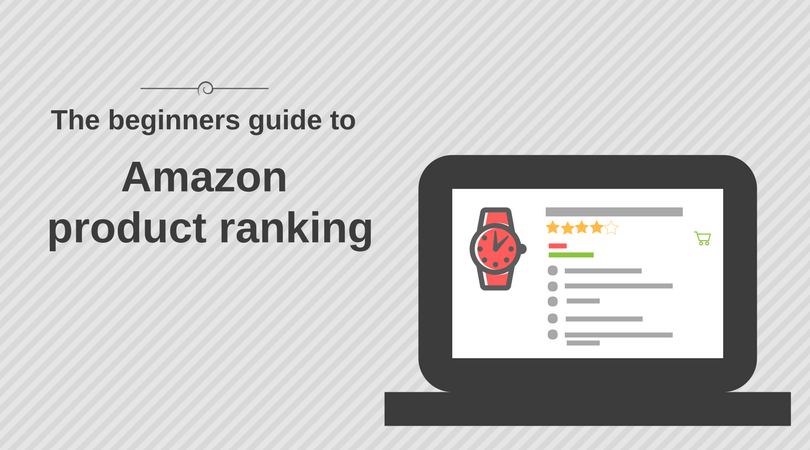 Google used to be the top way for potential buyers to learn about the products they want, but it has been surpassed by Amazon search. The world’s biggest online store is a great source of consumer reviews and other product info, and those who want to sell online can’t ignore the opportunities Amazon has to offer. Here are some quick facts:
Google used to be the top way for potential buyers to learn about the products they want, but it has been surpassed by Amazon search. The world’s biggest online store is a great source of consumer reviews and other product info, and those who want to sell online can’t ignore the opportunities Amazon has to offer. Here are some quick facts:
- 55% of consumers look for product information on Amazon rather than Google
- 90% of consumers look for a product on Amazon, even if they plan to buy it somewhere else
- 58% of consumers will turn to Amazon if they’ve had a bad experience with another online seller
With almost 500 million products in the US market, it’s important for sellers to make it as easy as possible for buyers to find their products on the platform. To that end, these tips can help online sellers improve their products’ rankings on Amazon.
Practice Proper Keyword Placement
Amazon’s search engine is quite strict, and it only lists items if they contain all the search terms the user enters. The search engine evaluates the product’s information fields, which are: its brand, color, description, enumerations, retailer name, special features, and search terms. Here, keyword location is irrelevant; the keywords must simply be included. If a seller isn’t sure which terms buyers will use when searching for an item, they can turn to Google for help. In some cases, using the terms Google suggests upon entry of the product’s name is enough, and Google’s Keyword Planner may help as well.
Write Conversion-Focused Content

Use Search Terms Properly
In the Seller Central section, there’s a “search terms” tab where sellers can enter relevant keywords. Consider the following:
- Platinum keywords are relevant only to sellers with platinum status.
- Each field can accommodate multiple terms, separated by blank spaces.
- If terms are in the product description or title, they don’t have to be repeated.
- Amazon doesn’t pay attention to the order in which keywords are listed.
- Capitalization doesn’t count.
Sellers can boost their product rankings by utilizing typical and colloquial spelling errors. For instance, the term “Allen screw” can be replaced with “flat screw”. Common spelling errors like “to” rather than “too” can be used as well.
Consider Niche Keywords
Some keywords are highly competitive, and sellers who use them have little chance of increasing their Amazon rankings. Therefore, new sellers should search for niche terms. What other keywords might buyers use to find a product? Optimize keywords, product descriptions, and article descriptions accordingly. There may be certain applications a product fulfills, but competitors have failed to mention. Highlighting these applications can boost a product’s visibility.
Look at Long-Tail Keywords
A long-tail keyword is a search phrase with multiple words. Most Amazon searches consist of one or two words. However, longer queries come with fewer searches and higher conversion rates. This means that every click is more likely to end in a sale, because shoppers know just what they’re looking for. Sellers should research their buyers and balance titles between short phrases and the long-tail terms customers use most. Devote some time to keyword research, check Amazon’s suggested searches, and look at what successful Amazon vendors are doing.
Optimize Product Titles

Utilize Bullet Points
With bullet points, sellers can easily put the right keywords in the right place while giving users the info they need. Bullet points should include the product’s title, features, weight, size, functions, and benefits.
Use Only High-Res Images
Online shoppers can’t touch or feel the products they’re evaluating, and images are therefore an important factor in many purchase decisions. Product images should be more than 1000×1000 pixels; if they’re over 1500×1500, Amazon scales them down. High-res images allow consumers to get a closer look at all of an item’s details from every angle. It’s important to select a visually compelling initial image, as it appears in product searches and encourages buyers to click on the item.
Write a Compelling Description
Pictures are one of the most important factors in buyers’ purchase decisions, but there’s more to it than that. When dozens of similar products are being sold, descriptions are crucial in buyers’ decisions. While bullet points address a product’s facts, the description speaks to consumers’ emotions. Take the time to accentuate an item’s positive features and be sure to clearly structure product descriptions with clear paragraphs, subheadings, and concise sentences. A high-quality product description takes effort and time, but it’s a worthwhile part of Amazon SEO.
Remember that Honesty is the Best Policy
Amazon lists its products according to how their search terms fit, how often consumers click, return rates, and overall sales. Therefore, it makes sense for sellers to be completely honest when entering product information. If a seller offers a product based on outlandish claims, they’ll soon be dealing with returns and dissatisfied customers, and their Amazon ratings will take a nosedive.
Use Negative Feedback Advantageously
Poor reviews are concerning, especially if they’re unfounded. However, some negative reviews can improve
Offer Amazon Prime Shipping Services
Amazon Prime members are much more likely to buy from sellers who have the Prime shipping option. With Prime, customers get an additional feeling of speed, service, and reliability, and many people simply want to get the maximum value out of the $99 yearly fee. Sellers should offer Prime shipping if possible, as it will substantially increase sales.
Increasing Sales
For a product to make it onto the first page Amazon mandates that products meet or exceed sales of first-page items. In most instances, this means a seller will have to boost sales with discounts, promotions, and other methods. Sellers have a few options:
- Amazon promotions: With Amazon Product Promotions, sellers may offer products at discounted process for almost any length of time. It is important for sellers to determine the minimum rate where they’ll break even after handling, shipping, management, purchasing, and manufacturing, so they won’t lose money on these discounts. Generally, this step increases a product’s sales. Basic economic rules suggest that, when a product’s price goes down, the demand goes up.
- Ads: Whether a seller uses Amazon’s ad program or one of the numerous third-party options, paying for advertisements is a great way to boost sales. Just as with discounts, it is important for sellers to understand their costs, so they don’t lose money on ads. It’s also crucial to check conversion rates and optimize products before paying for ads to avoid unnecessary spending of money and time. Amazon PPC (pay per click) ads are an effective way to achieve this goal, because they allow sellers to target all the most popular keywords in a category and have the product appear precisely where buyers are searching for it.
Building an audience: This is particularly important if a seller offers a product that people buy repeatedly. However, sellers should try to leverage existing audiences when marketing new products via promotions, email newsletters, or social media. This provides additional exposure for products, and if the item is something current customers are looking for, the seller’s rank will improve.
- Maintaining sales: Sellers should continue to run ads and promotions until sales meet or exceed competitors’ figures, so the product will stay on the first page of search results.
Offering a High-Quality Buying Experience
While all of the above tips are essential, the most vital part of an Amazon ranking campaign is to offer buyers a high-quality purchase experience. Without it, companies get bad reviews, which negatively affect sales numbers and overall account status. When people buy things online, they expect low-cost, fast shipping with superb customer service. If an Amazon seller offers all these features, they’ll find it easier to boost their rankings, increase sales, and keep their account in good standing. With the tips and facts listed here, even the smallest Amazon sellers can compete with the biggest companies.

 Building an audience: This is particularly important if a seller offers a product that people buy repeatedly. However, sellers should try to leverage existing audiences when marketing new products via promotions, email newsletters, or social media. This provides additional exposure for products, and if the item is something current customers are looking for, the seller’s rank will improve.
Building an audience: This is particularly important if a seller offers a product that people buy repeatedly. However, sellers should try to leverage existing audiences when marketing new products via promotions, email newsletters, or social media. This provides additional exposure for products, and if the item is something current customers are looking for, the seller’s rank will improve.









